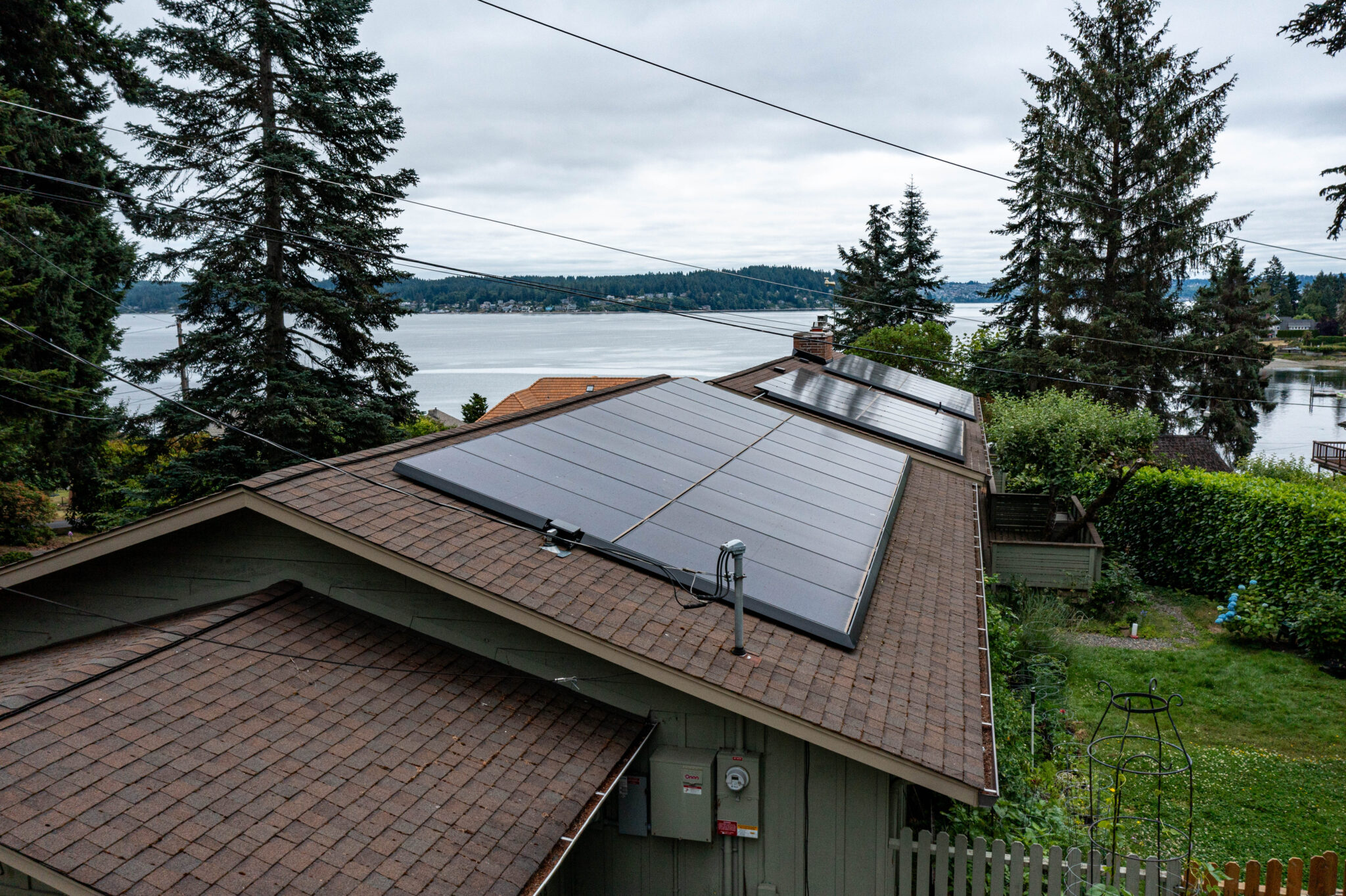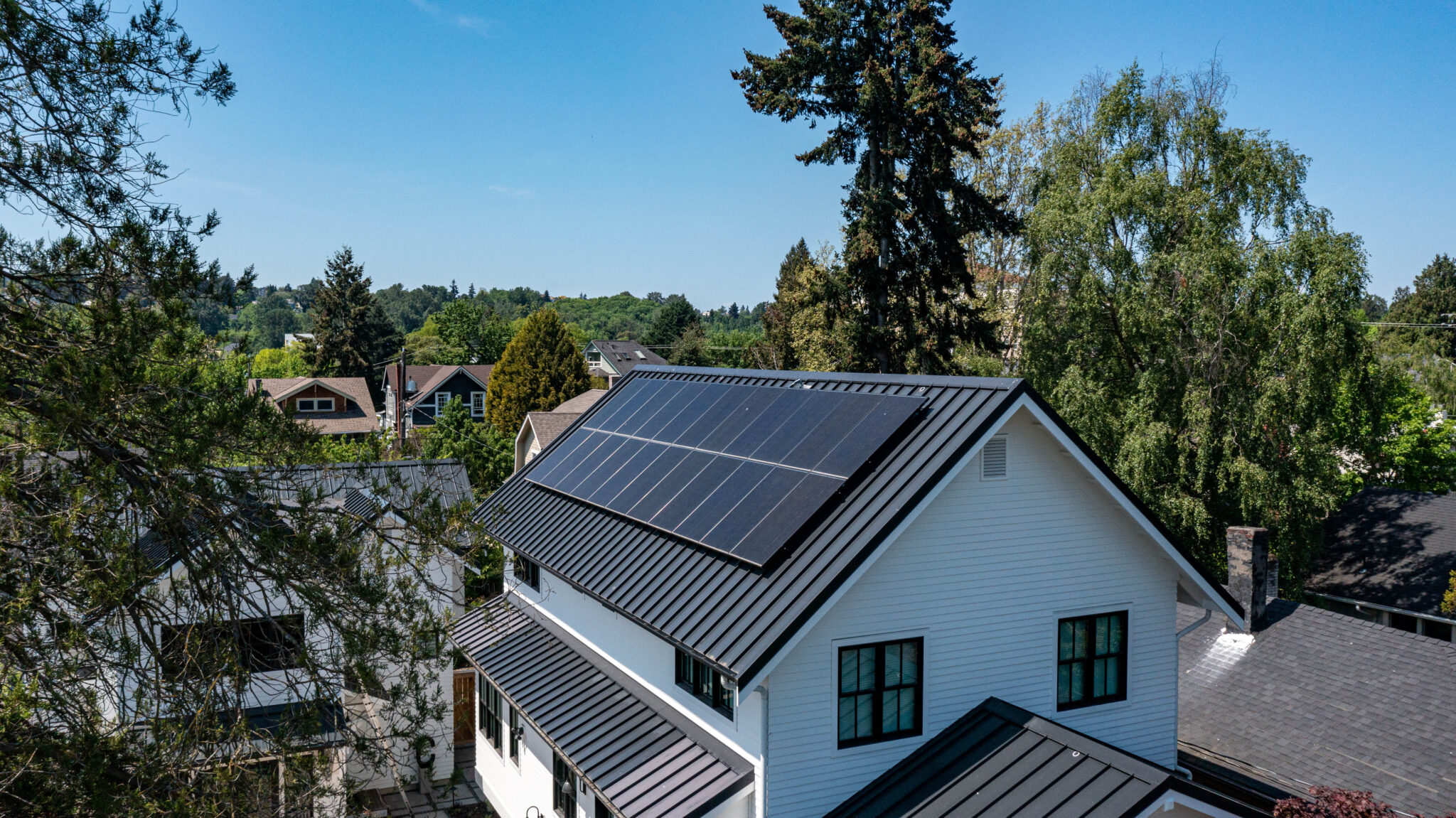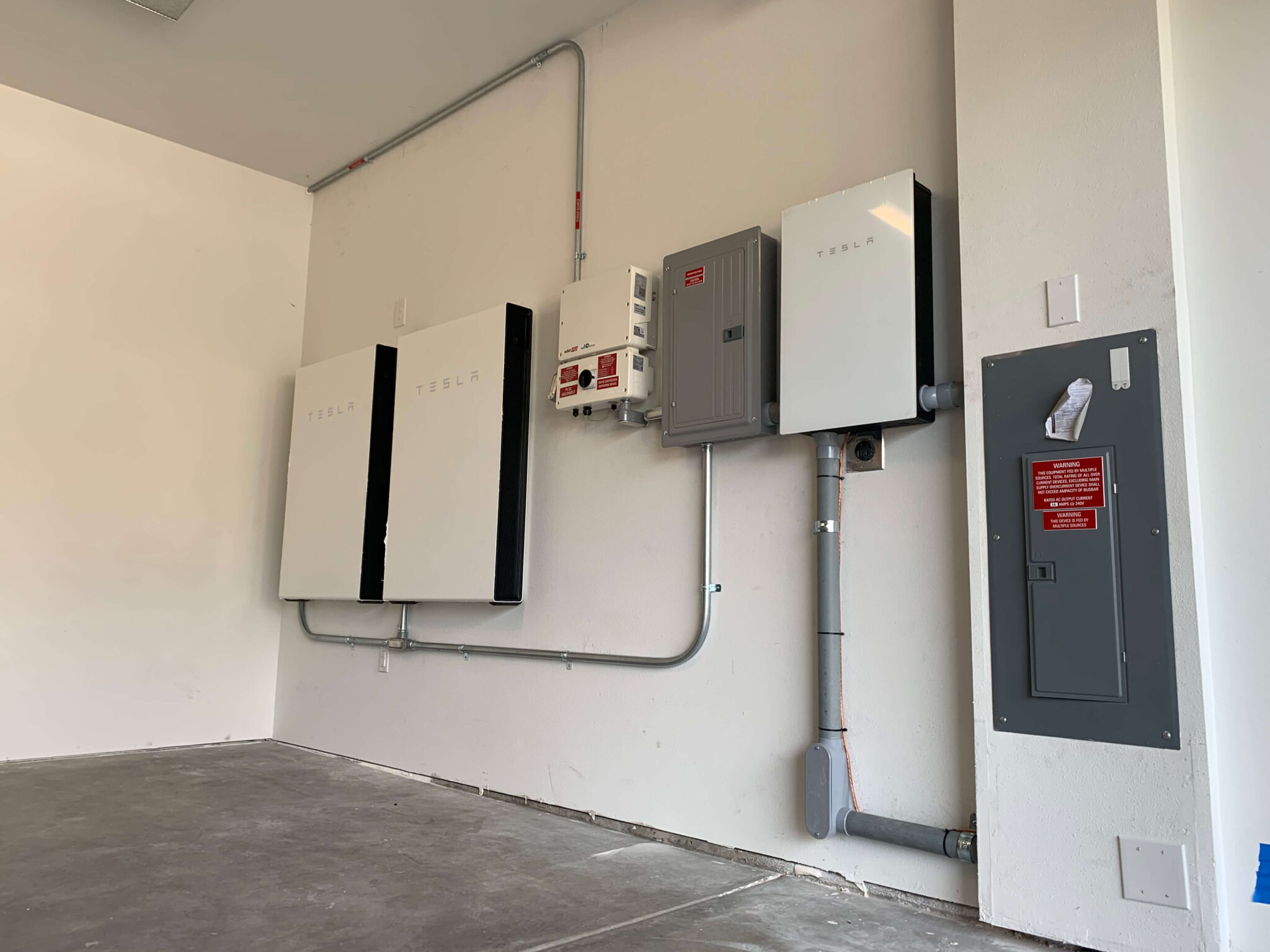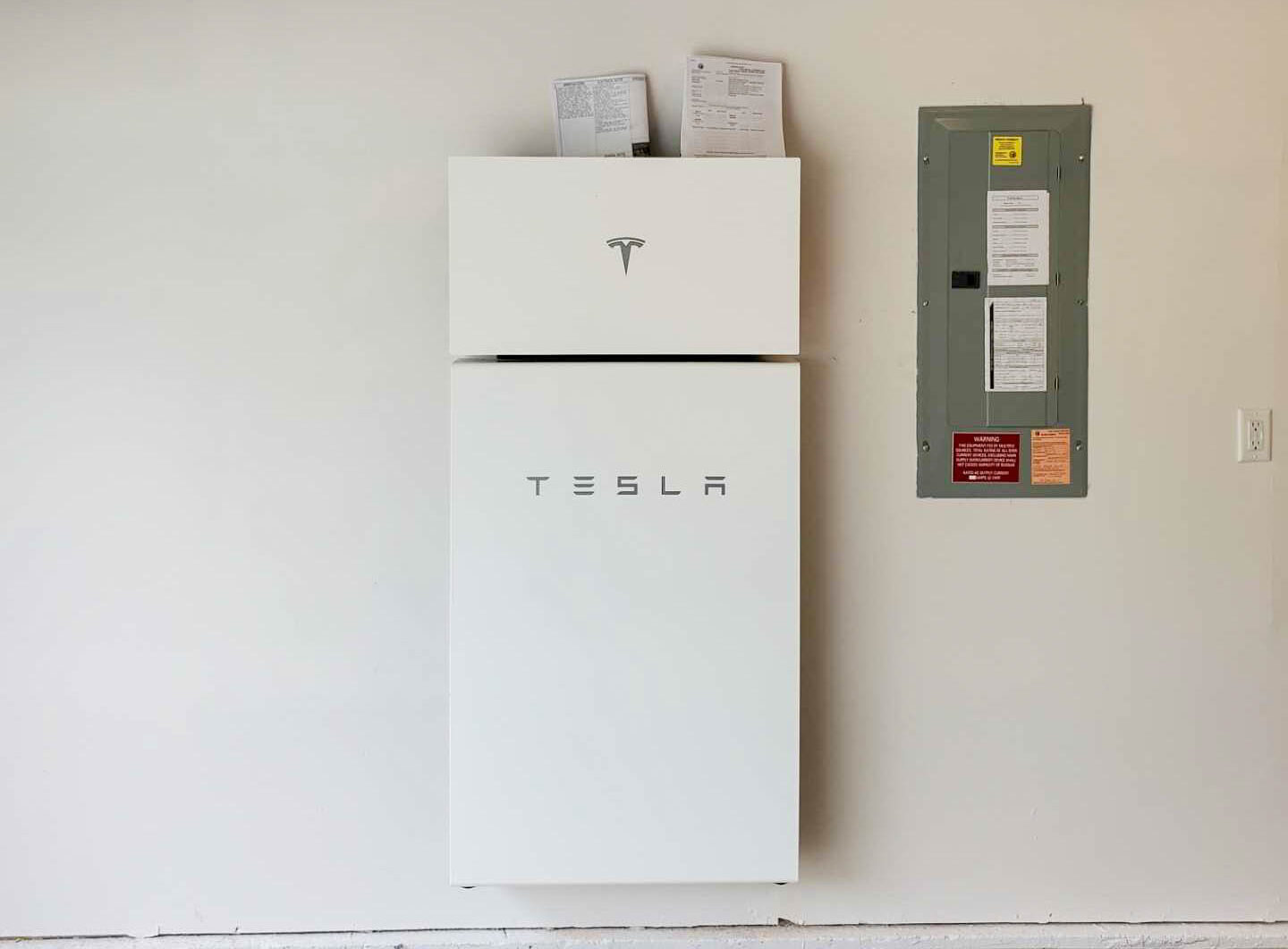Unleashing the Power of the Sun: An in-Depth Guide on How to Store Solar Energy
As we transition towards a more self-reliant future, the significance of renewable energy sources, such as solar power, becomes greater. Solar energy is one of the most accessible and abundant renewable energy sources.
In places like Washington state, its importance becomes more apparent when considering the frequency and duration of power outages. Washington comes in the top half of states with the most power outages, with statistics showing an average of 21 outages per year.
However, the real power of solar energy goes beyond generation and lies within energy storage. Efficient energy storage systems can help individuals and organizations maintain an uninterrupted power supply even during an outage, a common reason why people in Washington invest in battery storage.
So in the context of renewable energy, we need to focus not just on harnessing power, but also on adequate storage systems that allow us to make the most of this captured energy. Let’s explore more on the succeeding sections.
What is Solar Energy Storage?
Solar energy storage is a system that collects and stores excess solar power generated during periods of strong sunlight for usage, during periods of high electricity demand or low sunlight exposure, such as nighttime, cloudy days, or during power outages.
These storage solutions typically come in the form of lithium polymer batteries, specially designed to handle the output of a solar energy system. The most common types of lithium batteries for storing excess solar energy are lithium-ion and lithium-iron phosphate batteries.

How Does Solar Energy Storage Work?
Understanding how to store solar energy in a battery is crucial to making the most of a photovoltaic (PV) system.
When sunlight shines on the PV system, the sun’s energy is converted into electricity. This results in excess solar power, which can effectively be stored primarily using batteries. By doing so, the stored energy can be used when there is no direct sunlight.

Why is Solar Energy Storage Important?
Storing solar energy is important for several reasons. First, it allows solar energy producers to have a steady and available power source regardless of sunlight availability. This makes renewable energy sources significantly more reliable. Second, battery storage allows for energy independence and grid resilience. In the event of power outages, a storage system allows homes and businesses to use their stored solar energy. Furthermore, the technology is a huge step towards environmental sustainability, reducing carbon footprint by shaping a world less dependent on fossil fuels and more on renewable energy. Indeed, with the right storage, solar energy can power our future.
Types of Solar Energy Storage Systems
-
Hydrogen Storage

Solar energy can be used to split water molecules into hydrogen and oxygen through a process called electrolysis. The produced hydrogen can be stored and converted back into electricity through fuel cells or burned for heating or power generation. This technology holds great potential, although it is still in the developmental stages.
-
Compressed Air Energy Storage (CAES)

CAES systems store energy by compressing air during periods of low energy demand and then releasing the compressed air through a turbine to generate electricity when needed. They can use solar energy to power the compressors. They have large storage capacities, but they are currently limited to specific geographic locations due to underground storage requirements.
-
Flywheel Energy Storage

Flywheels store energy in the form of kinetic energy using a spinning rotor. The spinning speed increases when there is excess solar energy available and slows down to release energy when needed. Flywheels have high efficiency and power density, but their energy storage capabilities are rather short-term.
-
Hybrid Systems

Hybrid storage systems combine different storage technologies to optimize efficiency, cost, and performance. For example, a hybrid system might consist of a battery bank, a flywheel, and a capacitor, each serving different functions and responding to different energy demands.
-
Pumped Hydro Storage

Pumped hydro storage systems are a fantastic method of energy storage that uses gravity and elevation. They operate primarily by utilizing excess solar energy to power pumps that transfer water from a lower location to an elevated reservoir. This mechanism effectively allows the storage of potential energy in the form of gravitational energy.
A prime example of this system in operation can be witnessed at Snoqualmie Falls, Washington. It’s in such regions, blessed with appropriate geography and water resources, where this method really shines. At times of peak energy demand, the stored water is set free back to the lower reservoir. The force of the released water rotates a turbine, consequently generating electricity.
Choosing the Right Solar Energy Storage Solution
Selecting the optimal solar energy storage solution, including storage batteries for solar panels, depends largely on the specific project, energy requirements, and location. Choosing the right storage batteries for solar panels plays a critical role in the overall efficiency and effectiveness of the energy system.
It is important to consider factors such as:
- Energy storage capacity
- The technology’s efficiency and lifespan
- The local environment and its constraints
- Initial and operating costs
Engaging with a solar energy consultant or an experienced solar energy company will help guide you through the process of determining the best storage solution for your specific circumstances.

Understanding Battery Chemistries Used in Residential and Commercial Solar Applications
The knowledge of how to store energy from solar panels is vital, and in this process, the battery for storing solar energy is a key component for both residential and commercial applications. It enables efficient storage and usage of the harvested solar energy even when the sun isn’t shining. In the following exposition, we breakdown the various types of battery chemistries used for storing solar energy.
-
Lead-Acid Batteries

Traditionally, the most common type are lead-acid batteries, identical in technology to car batteries. They are affordable and reliable options if you want a better way on how to store solar energy in battery, making them suitable for small-scale solar systems. However, they have a low Depth of Discharge (DoD), meaning only a fraction of the total capacity is usable. They also have a shorter lifespan and lower efficiency compared to newer technologies.
-
Lithium-Ion Batteries

Currently, the most popular option for storage of solar energy, lithium-ion batteries offer excellent efficiency and long lifespans. They have a high DoD, meaning a larger portion of the battery’s capacity can be used. However, they are more expensive than lead-acid batteries. Notable sub-types include lithium iron phosphate (LiFePO4) and lithium nickel manganese cobalt (NMC).
-
Saltwater Batteries

A more environmentally friendly option, saltwater batteries use saltwater electrolytes for energy storage. They have a longer lifecycle than other batteries and can be completely discharged without damage. However, they are larger and heavier, and their energy density is low, which means they require more physical space for the same amount of energy storage.
-
Flow Batteries

Flow Batteries Redox flow batteries offer a unique solution, storing energy in liquid electrolyte solution in external tanks. This separation allows for independent scaling of power (size of the battery) and energy (size of the tanks), making flow batteries incredibly flexible. They are often used for large commercial applications, but their complexity and cost make them less common for residential use.
-
Nickel-Cadmium (NiCd) and Nickel–Metal Hydride (NiMH) Batteries

Although less common in solar storage, these options are robust with a reasonable lifecycle. NiCd batteries are tolerant of a wide range of temperatures and can be discharged completely without damage. NiMH batteries, an improved version of NiCd, offer similar benefits with fewer environmental concerns. However, both types have lower energy densities compared to lithium-ion batteries and are therefore larger and heavier for the same capacity.
What are the Benefits of Storing Solar Energy?
Storing solar energy brings numerous benefits beyond making renewable energy available round-the-clock.
Here are some key advantages of solar energy storage:
Energy Independence: Stored solar energy reduces reliance on the grid, providing you with a power source during grid outages or high-demand periods.
Improved utilization of Renewable Energy: By using battery storage solutions, you are enabling the efficient use of renewable energy. It allows the stored solar energy to be used even when the sun isn’t shining or the wind isn’t blowing. This diminishes our reliance on carbon-intensive power sources, thereby significantly reducing our overall carbon footprint.
Grid Stability: On a broader scale, solar energy storage can help stabilize the grid by balancing supply and demand.

Is Storing Solar Energy Expensive?
The cost of storing solar energy is primarily dependent on the storage technology chosen. While storage systems like batteries might pose a significant upfront cost, they often become cost-effective over their lifespan by reducing dependence on the grid and lowering electricity bills.
Additionally, as technology continues to advance and improve efficiency, prices have seen a consistent decrease over recent years.
In regions such as Washington State, financial incentives and grants are available that can aid in offsetting these expenses. To help you navigate these options and gain precise insights into the cost and benefits of battery energy storage systems for your specific situation, consider filling out a form for a free consultation. This can provide you with tailored guidance on how to best approach this potentially cost-saving energy solution.
How Long Can Solar Energy Be Stored?
The duration that solar energy can be stored largely depends on the specific storage system you employ. At Northwest Electric and Solar, our offerings range from daily use batteries to long-term storage solutions. This variety allows us to meet the unique requirements of our clients in Washington State.
One of our key options for storage is battery installations, ideal for daily use. A standout in our selection includes Tesla’s Powerwall with Tesla Gateway. This advanced battery can typically hold its charge for several hours, providing a reliable solution for daily energy needs.
Another top-tier battery product we offer is the FranklinWH aPower battery with aGate system controls. Like the Powerwall, it also stores power efficiently, ensuring you have a dependable energy reserve when needed.
To identify the most suitable solution for you, the selection process should focus on aligning your specific energy needs with the right storage system.
The Bright Road Ahead
As we venture into the future, solar and battery storage stand out as essential in our journey toward a sustainable, green planet.
Companies like Northwest Electric & Solar, based in Washington State, are leading the charge, providing expert solar energy harnessing and storage solutions. For three out of the last four years, we solidified our standing by emerging as Washington’s top installer of solar plus storage systems.
Partner with us and back up your home’s energy with a professional battery energy storage system installation. Together, we are Electrifying Washington and stewarding a brighter, more sustainable future for all generations.



